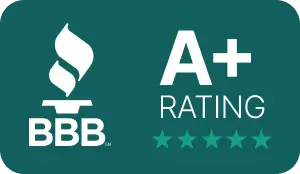Why the Definition Matters
Probate funding is often misunderstood. Some assume it works like a traditional loan, while others believe it’s more of a sale. The truth is, the legal structure can significantly impact how repayment works, how obligations are handled, and the level of personal risk involved. Understanding whether an arrangement is a loan or a purchase of inheritance rights is crucial for making informed financial decisions during the probate process.
In many cases, probate funding is structured as a purchase rather than a loan. Instead of borrowing money and repaying it with interest, the beneficiary sells a portion of their expected inheritance in exchange for immediate funds. Repayment happens only from the actual distribution they receive—meaning if the estate’s value changes, their personal assets typically aren’t at risk.
Implications for Trustees Handling Complex Estates
The legal classification of probate funding can be especially important for trustees managing estates with complicated structures, multiple heirs, or high-value but illiquid assets. When a transaction is a purchase of future inheritance rights, trustees can often proceed without the borrower’s credit history being a deciding factor. This can make funding solutions designed for trustees in challenging estate scenarios more flexible and less restrictive than traditional lending.
Aligning With Broader Financial Goals
Because probate funding is typically based on the value of the inheritance rather than income or credit score, it can be strategically integrated into a client’s overall wealth management plan. Financial advisors often help beneficiaries assess whether a probate advance is the right choice compared to other short-term options. By aligning probate funding with long-term objectives, clients can address immediate needs without undermining investments or future plans.
Paying Obligations Without Asset Sales
The difference between a loan and a purchase also matters when using probate funding to manage estate debts. With a purchase arrangement, funds can be used to pay taxes, legal costs, or other obligations without requiring the estate to sell property or investments prematurely. Beneficiaries seeking to protect valuable holdings can turn to solutions that allow debt repayment without liquidating estate assets, maintaining both the estate’s value and the intended distribution to heirs.
How Estate Value Changes Affect the Agreement
If probate funding is structured as a loan, a decline in estate value could leave a beneficiary personally responsible for any shortfall. But with a purchase arrangement, repayment is typically capped at the agreed-upon portion of the actual inheritance received. This can make a significant difference for those concerned about market downturns or unexpected liabilities. Beneficiaries often find reassurance in knowing how these agreements operate when estate assets lose value and that personal financial exposure is minimized.
Access for Those With Credit Challenges
One of the key distinctions between probate funding and conventional lending is accessibility. Since repayment comes directly from the inheritance rather than ongoing income, beneficiaries with less-than-perfect credit may still qualify. This makes it possible for individuals to secure an inheritance advance even when banks would deny a traditional loan. For those who need immediate liquidity during probate, understanding how funding works for applicants with poor credit history can open the door to financial relief without the barriers of standard lending criteria.
Choosing the Right Structure for Your Needs
Whether classified as a loan or a purchase, probate funding can provide a valuable bridge between immediate financial needs and the final distribution of the estate. The structure chosen should reflect the beneficiary’s priorities—whether that’s minimizing personal liability, ensuring predictable repayment terms, or preserving estate assets.
By understanding the legal distinctions, trustees, executors, and beneficiaries can make choices that align with their role in the estate and their financial goals. And for many, the flexibility and protections offered by purchase-based arrangements make them a compelling alternative to traditional borrowing during probate.
Moving Forward With Clarity
If you’re considering probate funding but aren’t sure how the structure affects your obligations, taking the time to explore the legal differences can protect you from unnecessary risk. The right arrangement can give you the funds you need now, without jeopardizing the estate’s future value or your personal finances.
If you want to understand which option best fits your situation—whether as a beneficiary, trustee, or executor—consider speaking with a probate funding specialist who can walk you through the details and help you make the most informed decision possible.
Disclaimer: These materials have been prepared for general informational purposes only and are not intended and should not be construed as legal or financial advice, or legal or financial opinion on any specific facts or circumstances.








